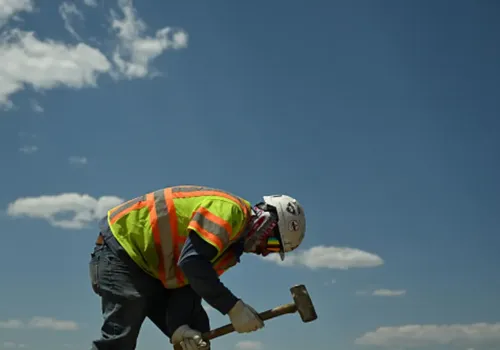
Despite a cooling labor market, construction contractors are staying upbeat. The Bureau of Labor Statistics reported Tuesday that the industry had 245,000 open positions at the end of May — just 3,000 more than in April. Still, this marks a 35% drop compared to May 2024.
“The figures indicate that contractors are becoming more cautious overall, scaling back on growth and expansion plans, but not turning to widespread layoffs,” said Macrina Wilkins, senior research analyst for the Associated General Contractors of America.

Layoffs remain historically low, suggesting firms are prioritizing workforce retention. “Even with fewer openings and hires, firms are holding on to their current workforce, signaling the continued value they place on skilled workers amid persistent labor shortages and uncertainty around project pipelines,” Wilkins added.
The hiring rate is the lowest it’s been in the 25-year history of the data series, said Anirban Basu, Chief Economist at Associated Builders and Contractors. However, Basu warned that the numbers might not reflect the full impact of immigration policy.
“Of course, it’s unclear how immigration policy uncertainty is affecting these data,” Basu said. “To the extent that a decline in the hiring of undocumented workers is not reflected, the industry could be significantly weaker than it appears.”
In May, Immigration and Customs Enforcement (ICE) intensified jobsite raids targeting unauthorized workers. These operations not only disrupt ongoing projects but also create anxiety across the sector.
Still, Basu noted that contractors are maintaining a positive outlook. “Over half of ABC members report optimism for staffing in the second half of the year,” he said.
Industry leaders say the focus on workforce stability is a direct response to ongoing challenges in recruiting skilled labor. Trade associations are ramping up calls for expanded workforce development initiatives and immigration reform to ease constraints on the construction labor force.
Some firms are also turning to automation and prefabrication to ease staffing burdens. But as Wilkins points out, “No technology can fully replace the skilled tradespeople needed to meet construction demands.”
As the sector heads into the second half of 2025, the balance between policy uncertainty, labor availability, and contractor confidence will shape hiring decisions and project pipelines nationwide.
Originally reported by Zachary Phillips in Construction Dive.